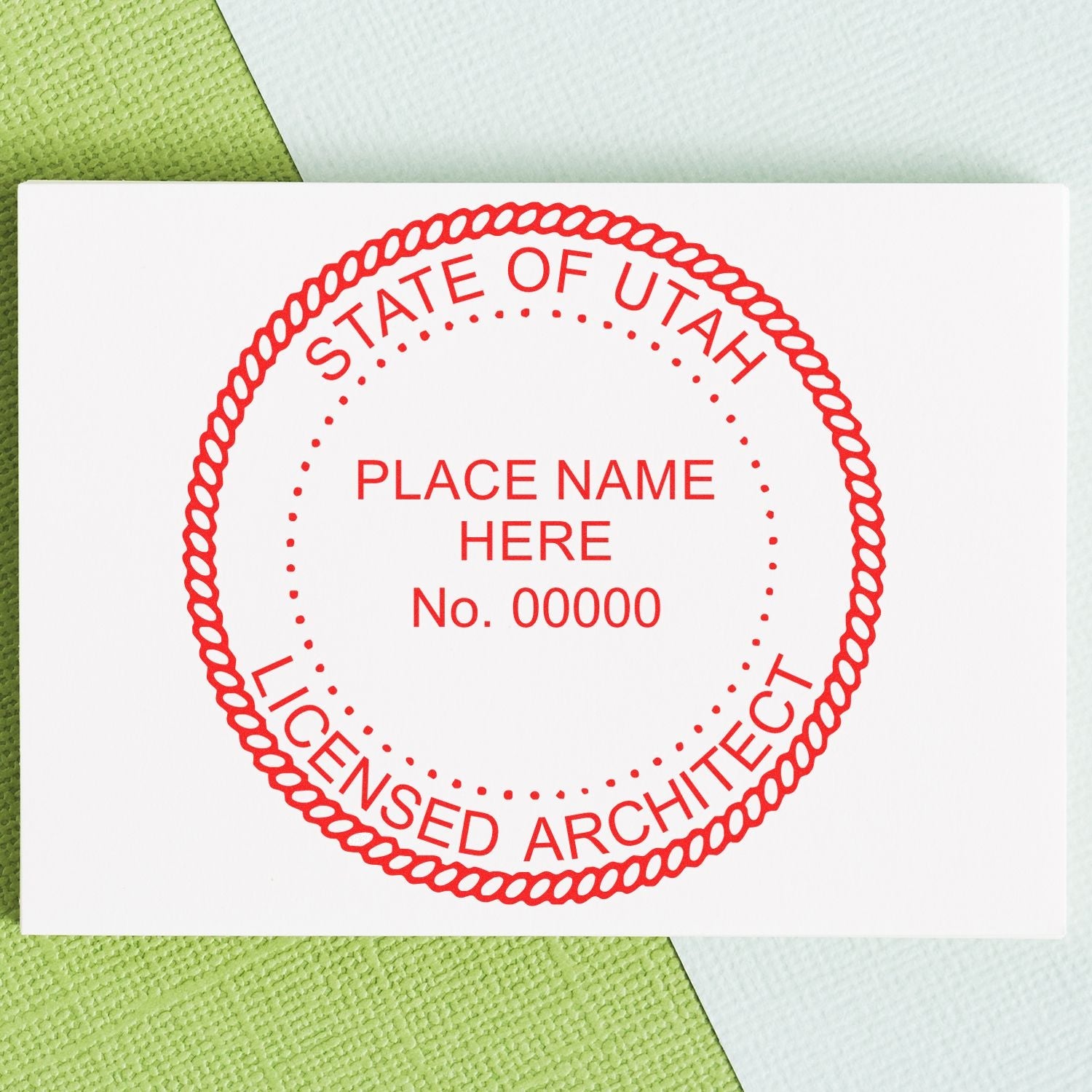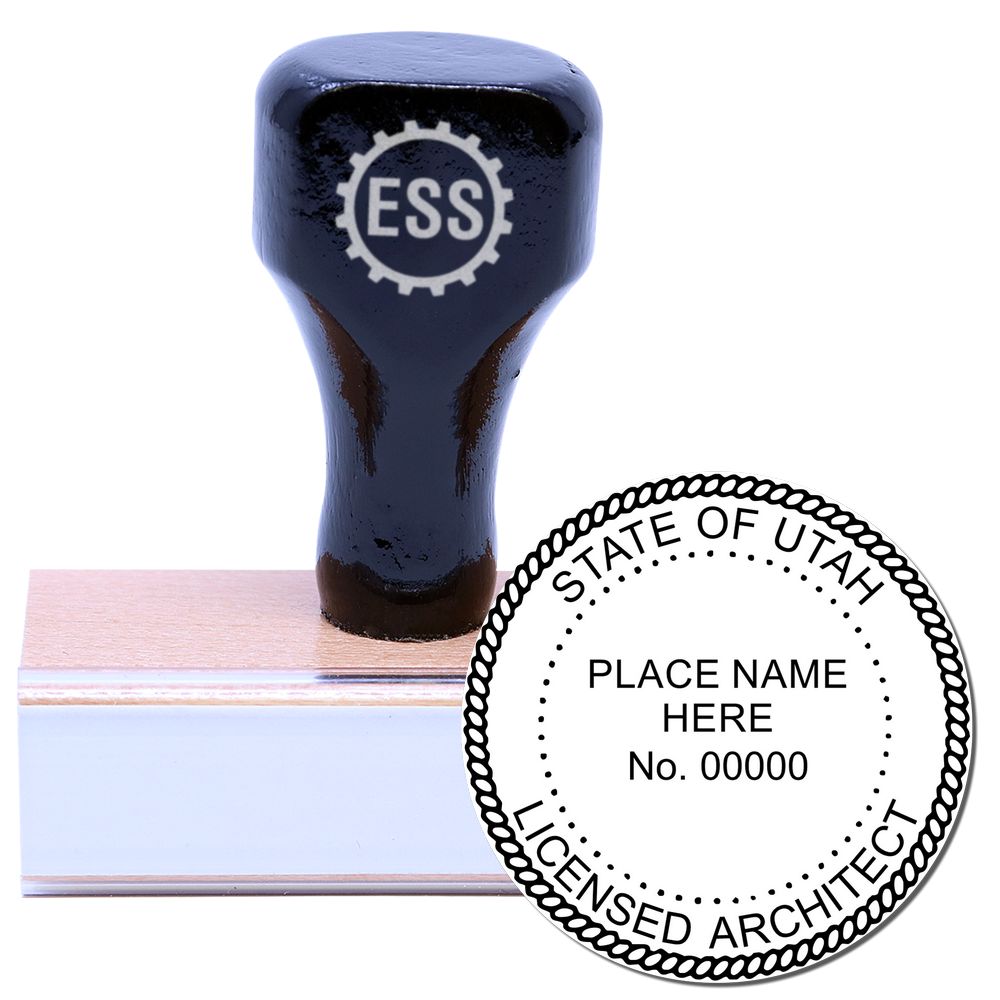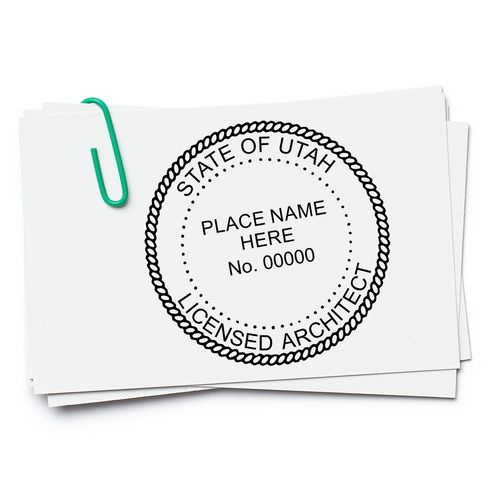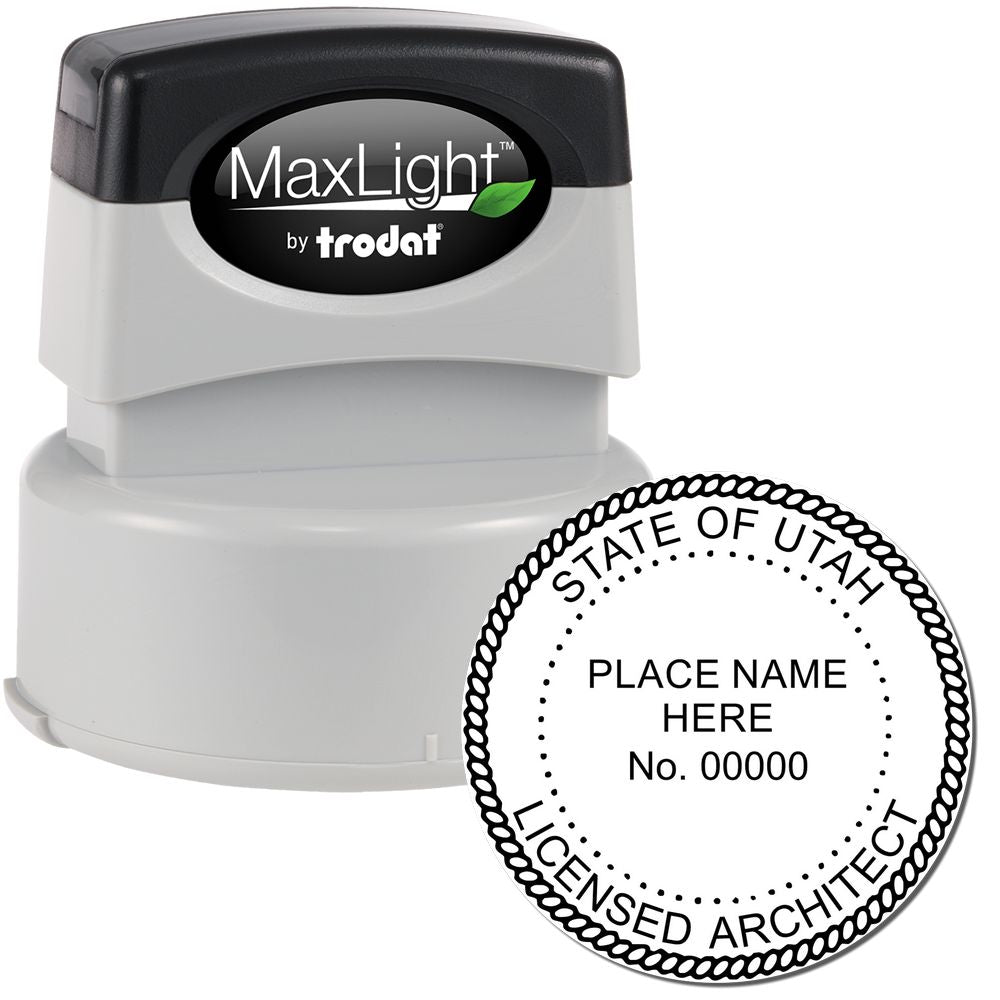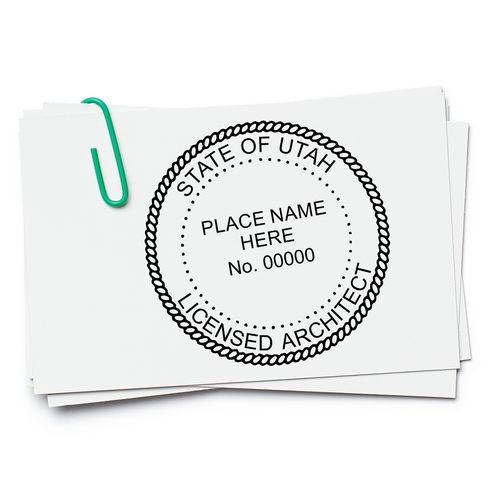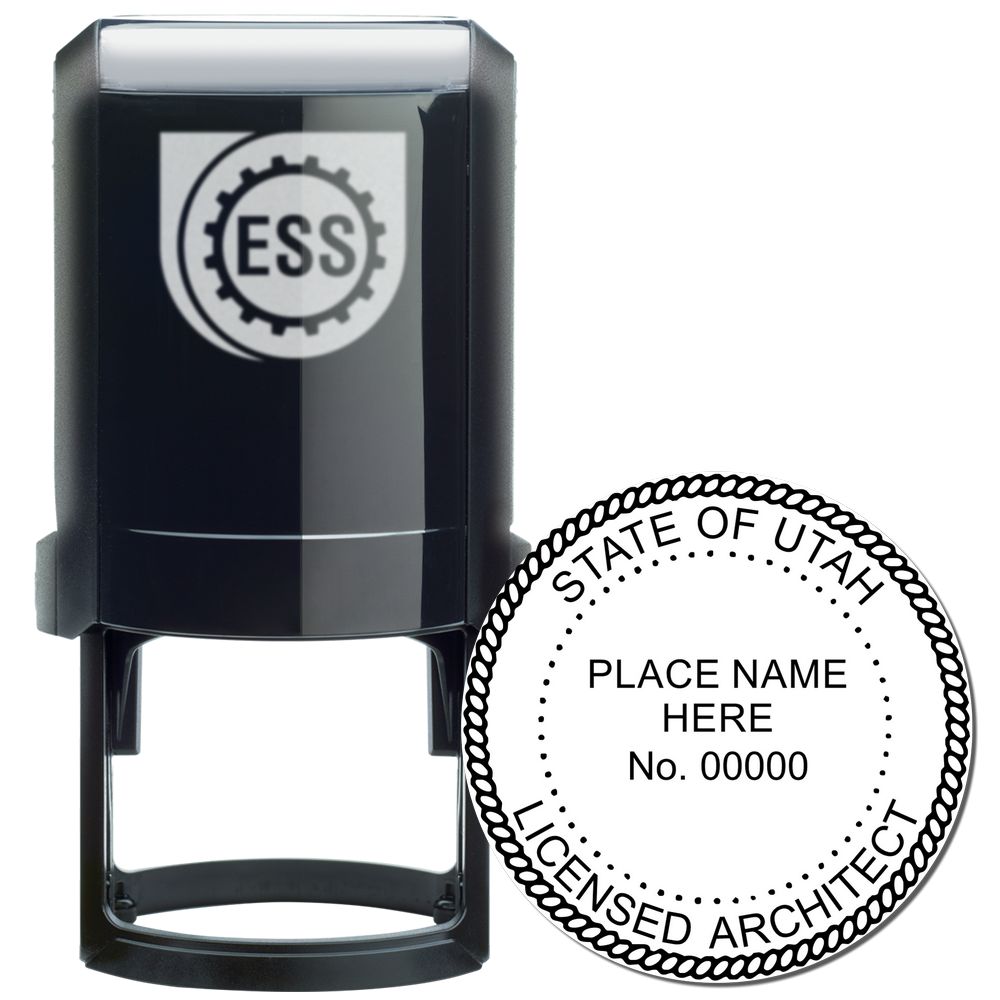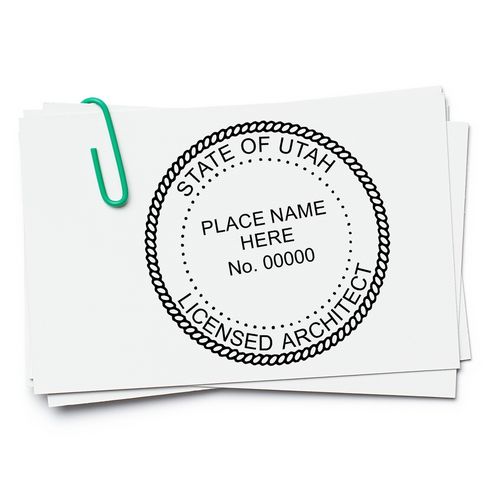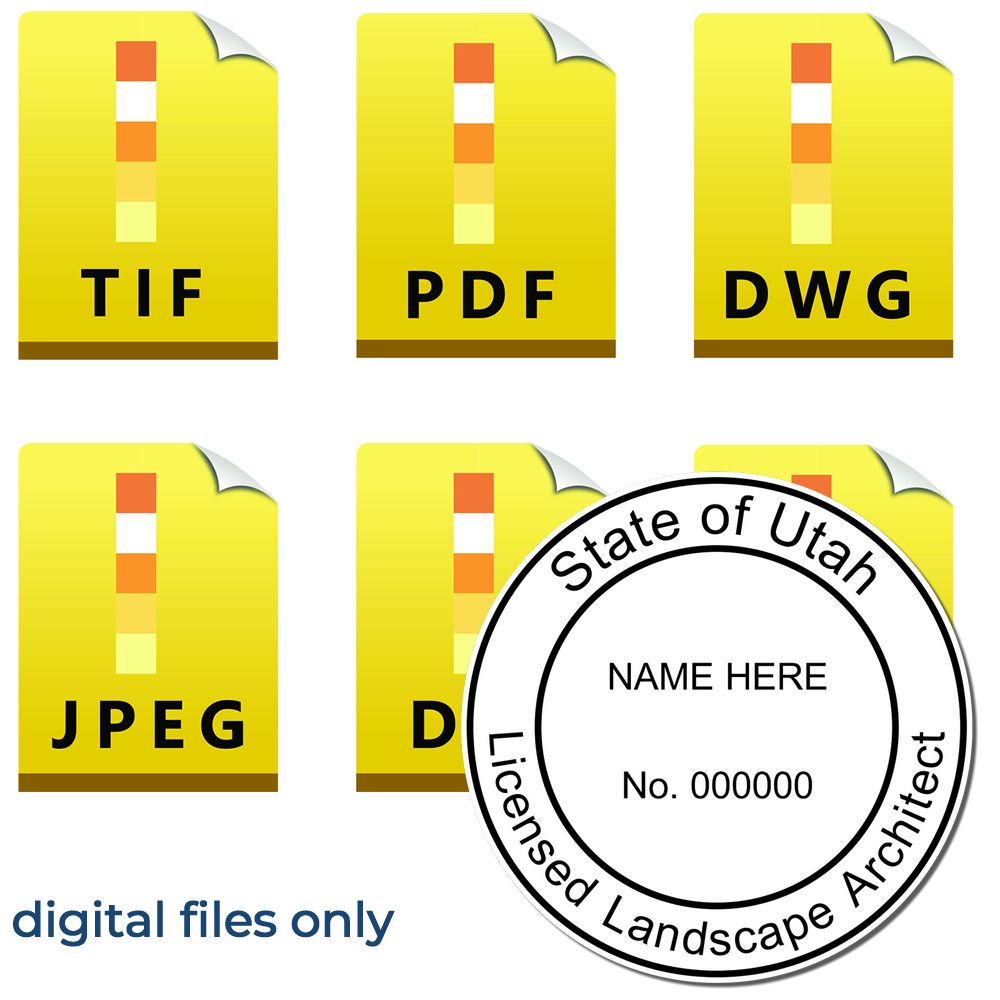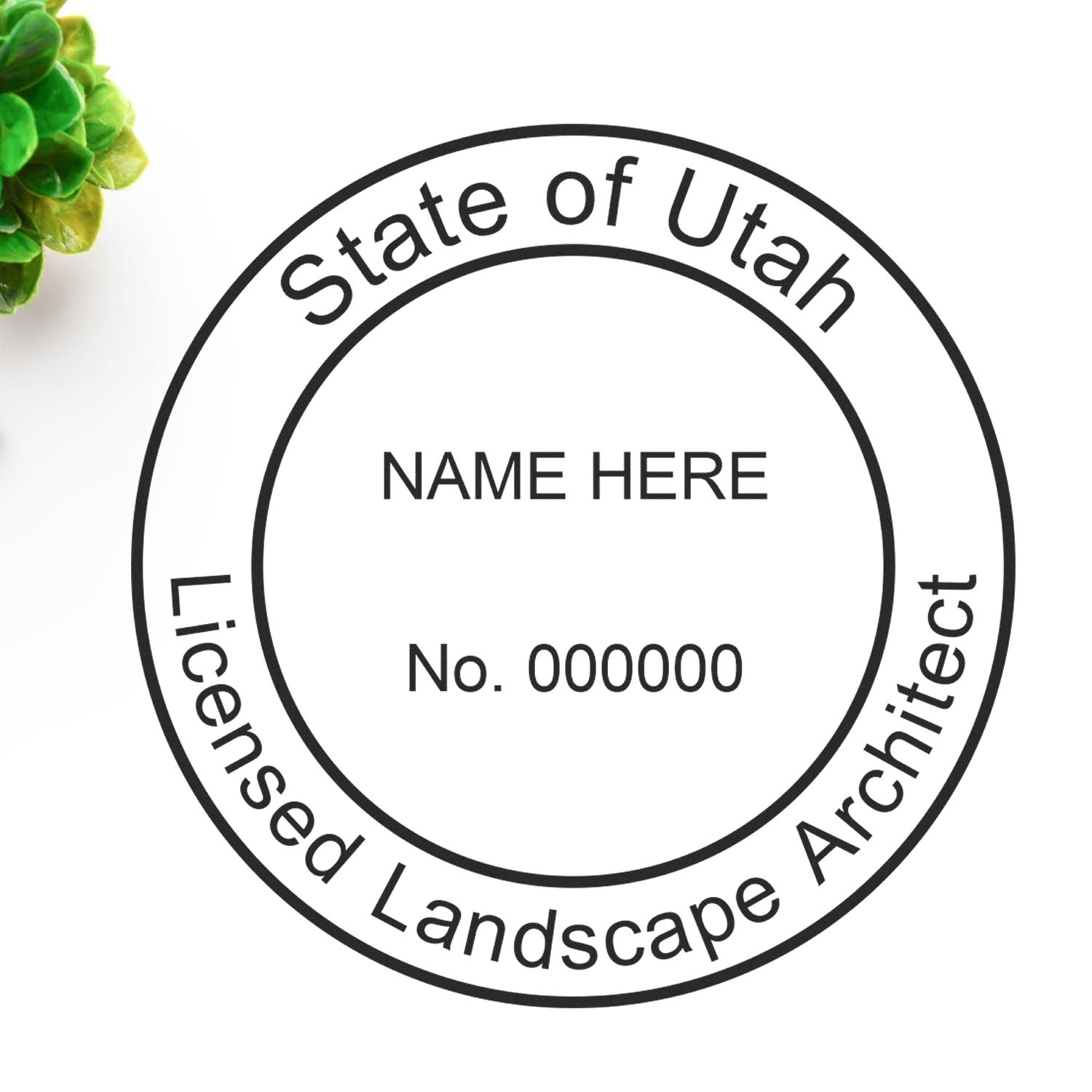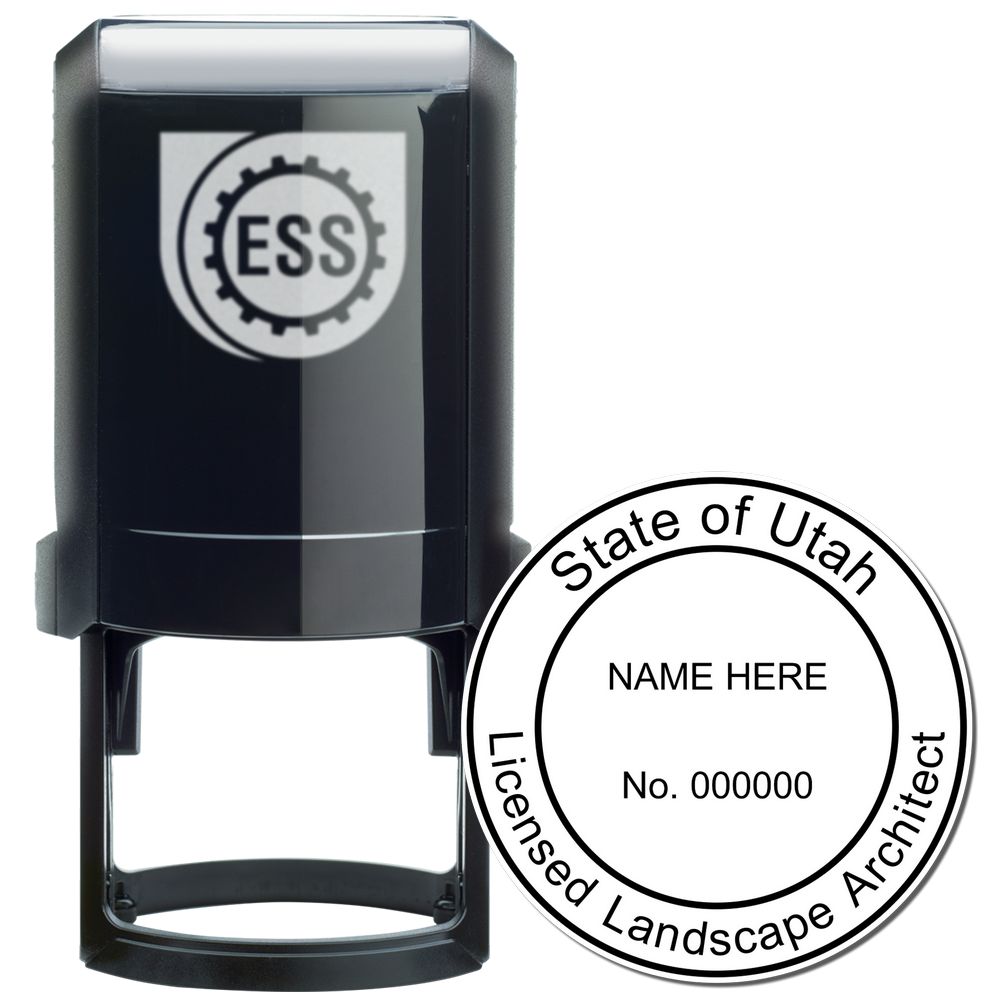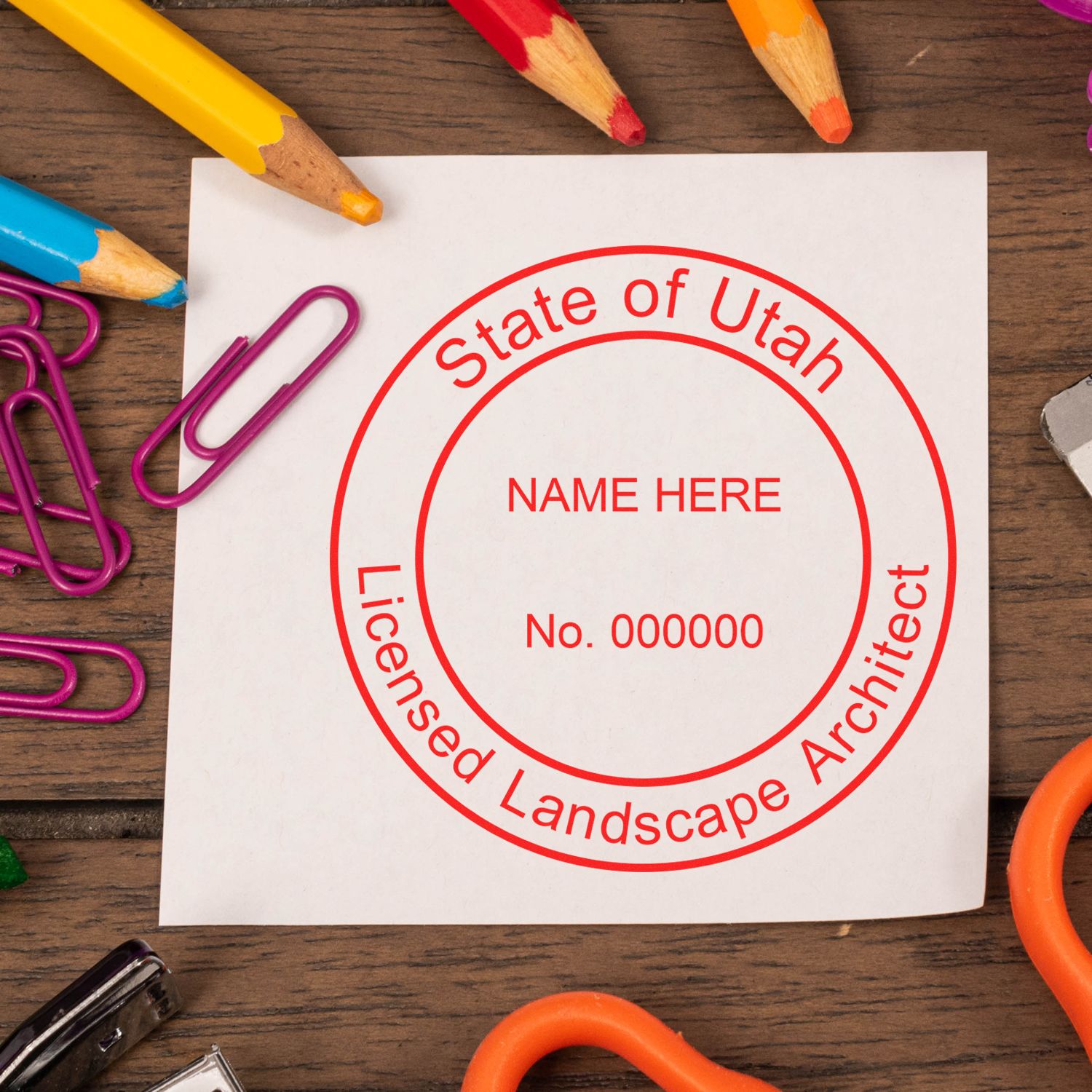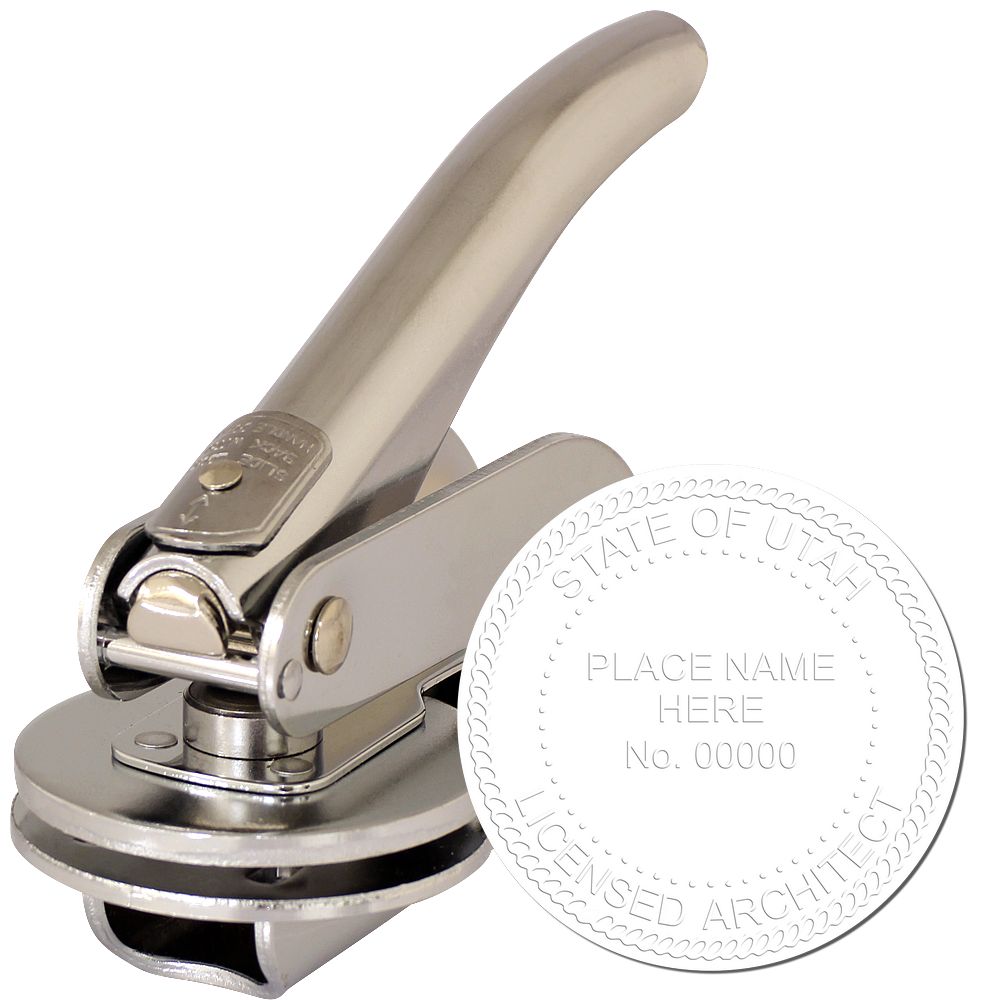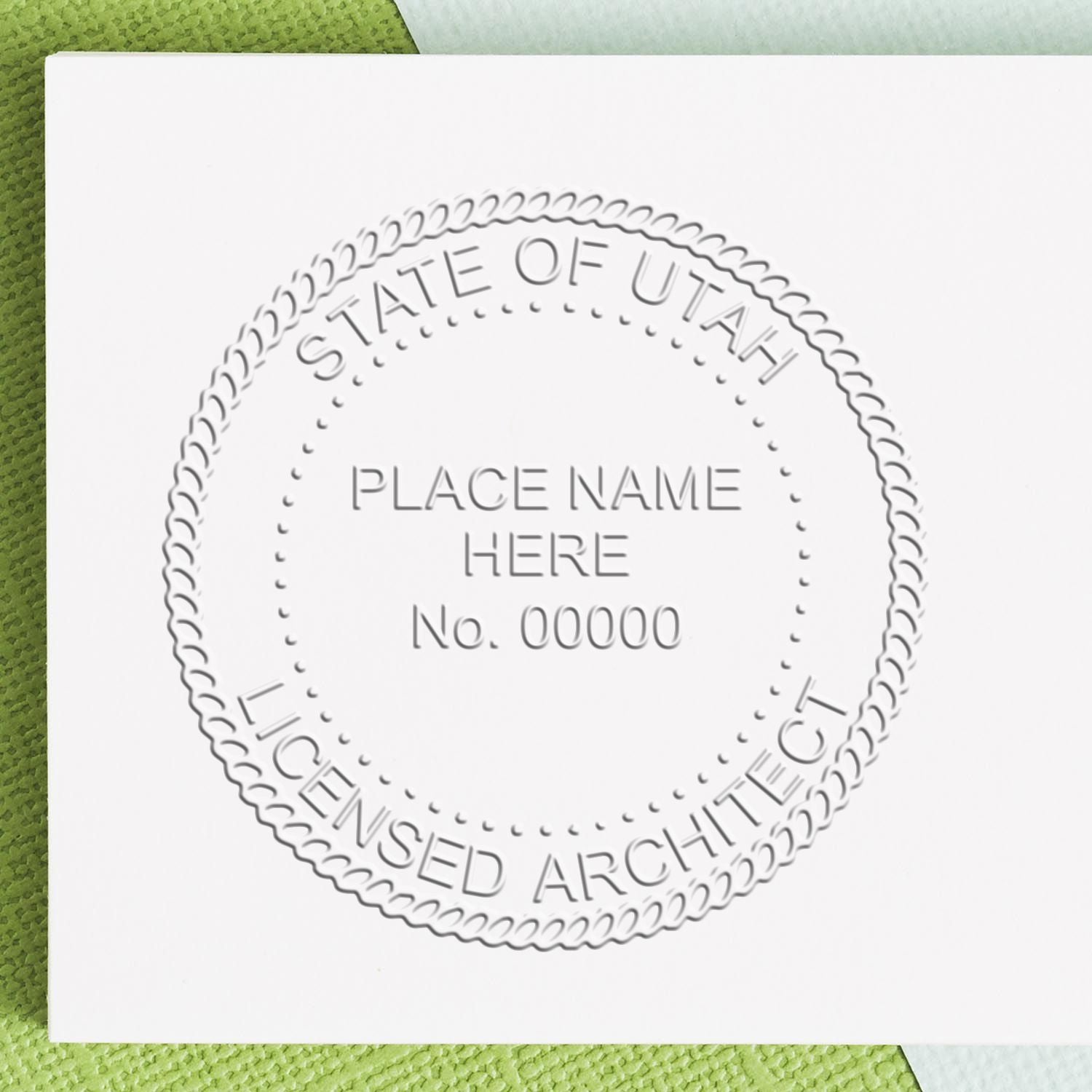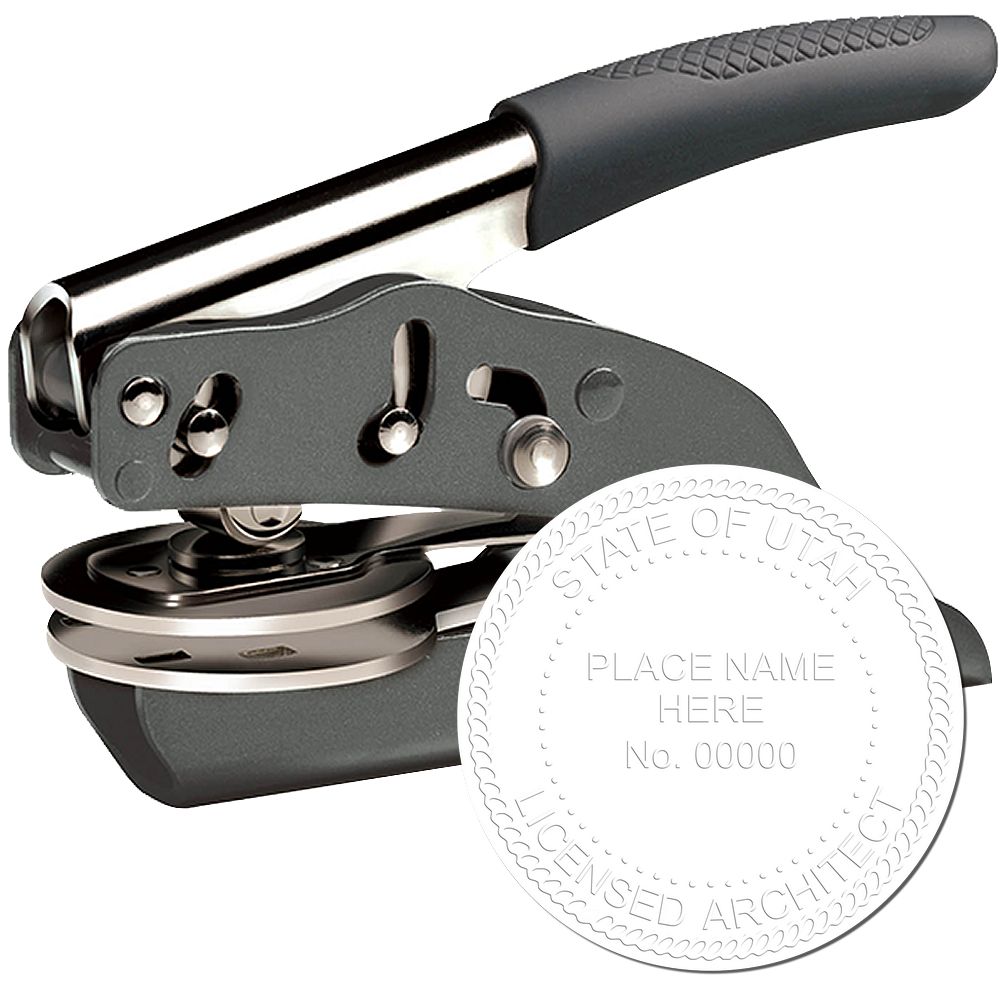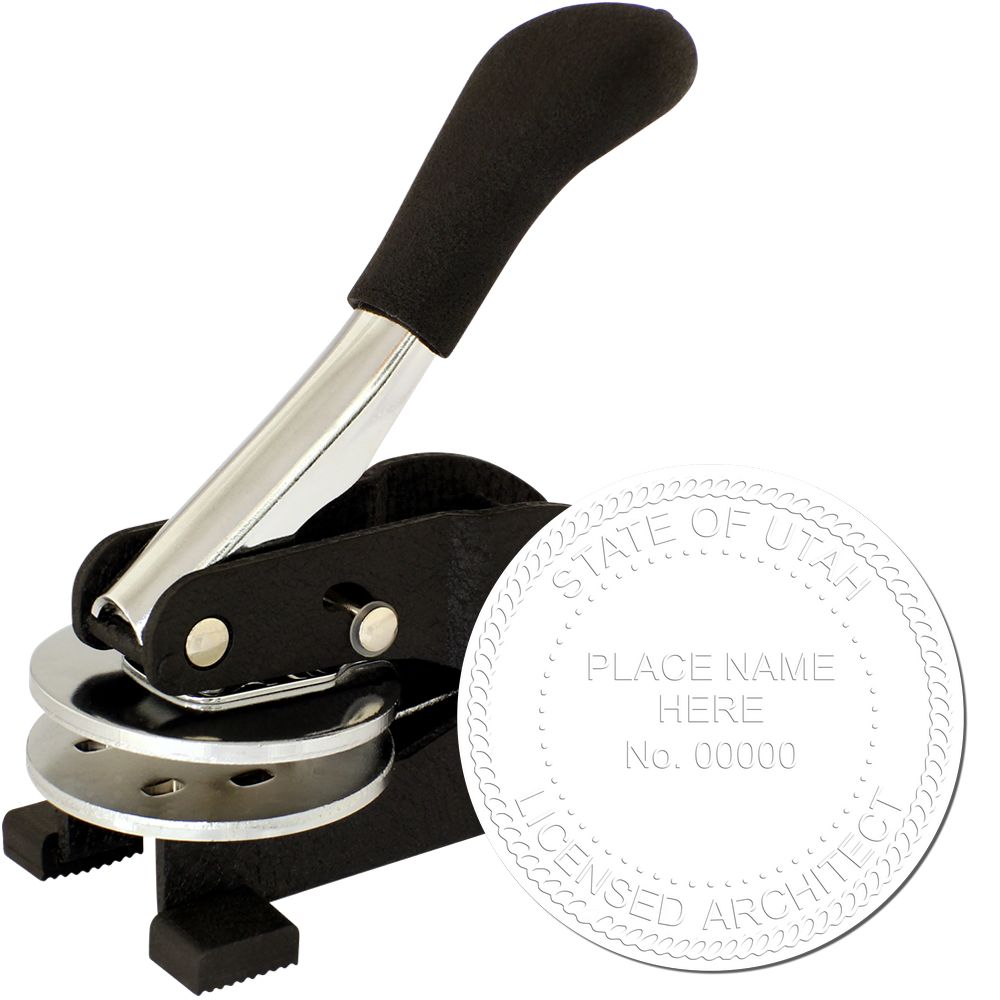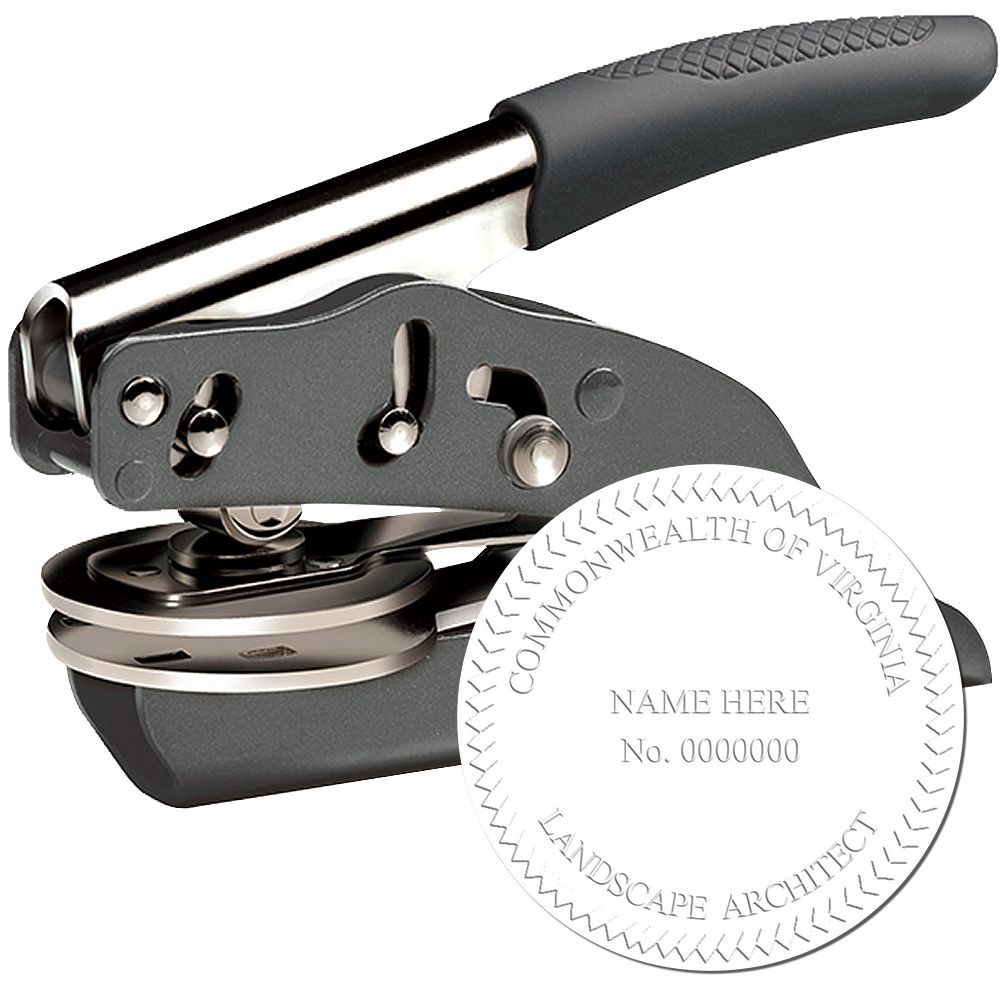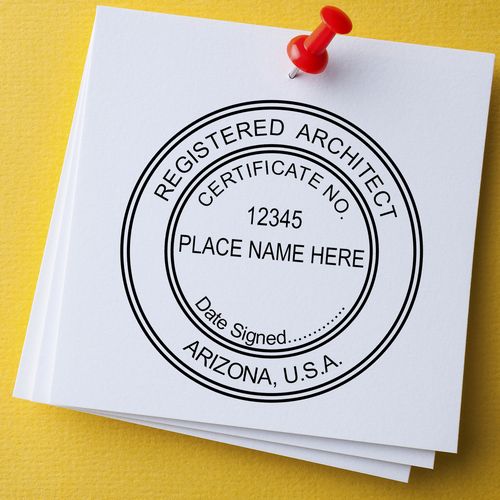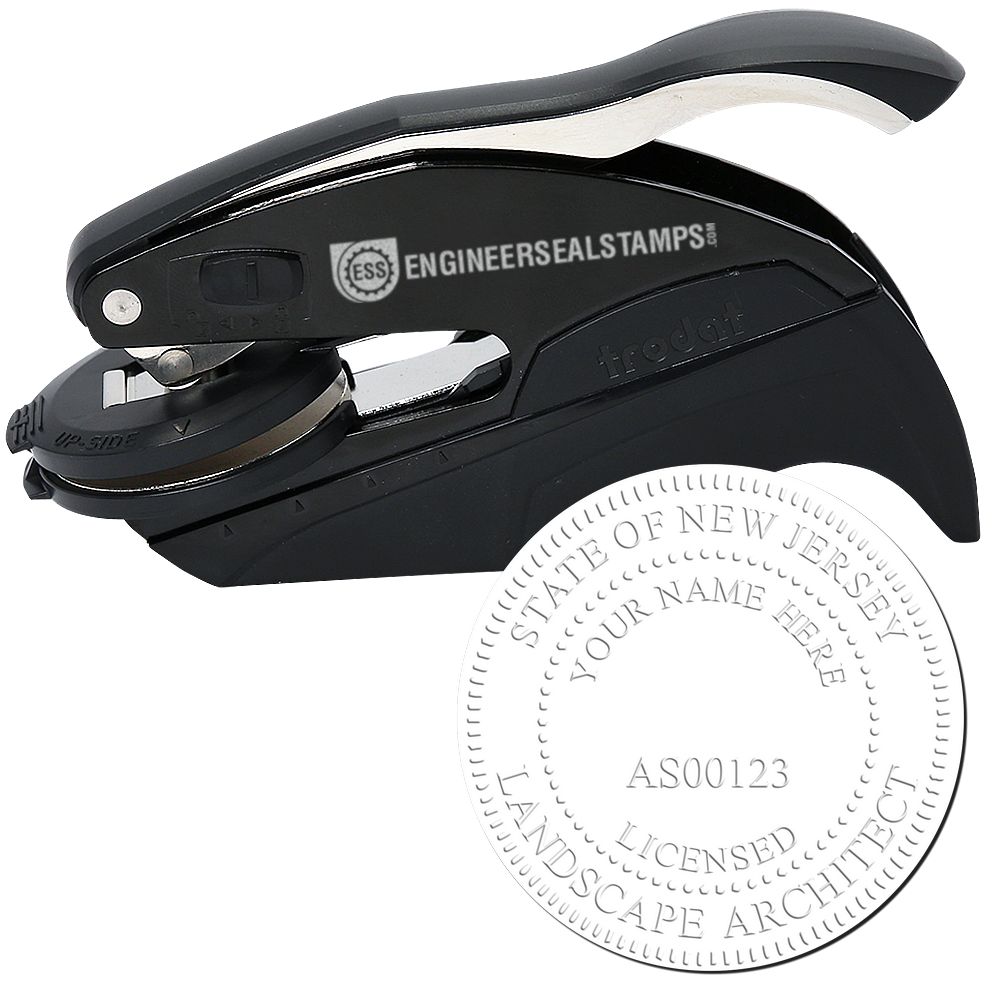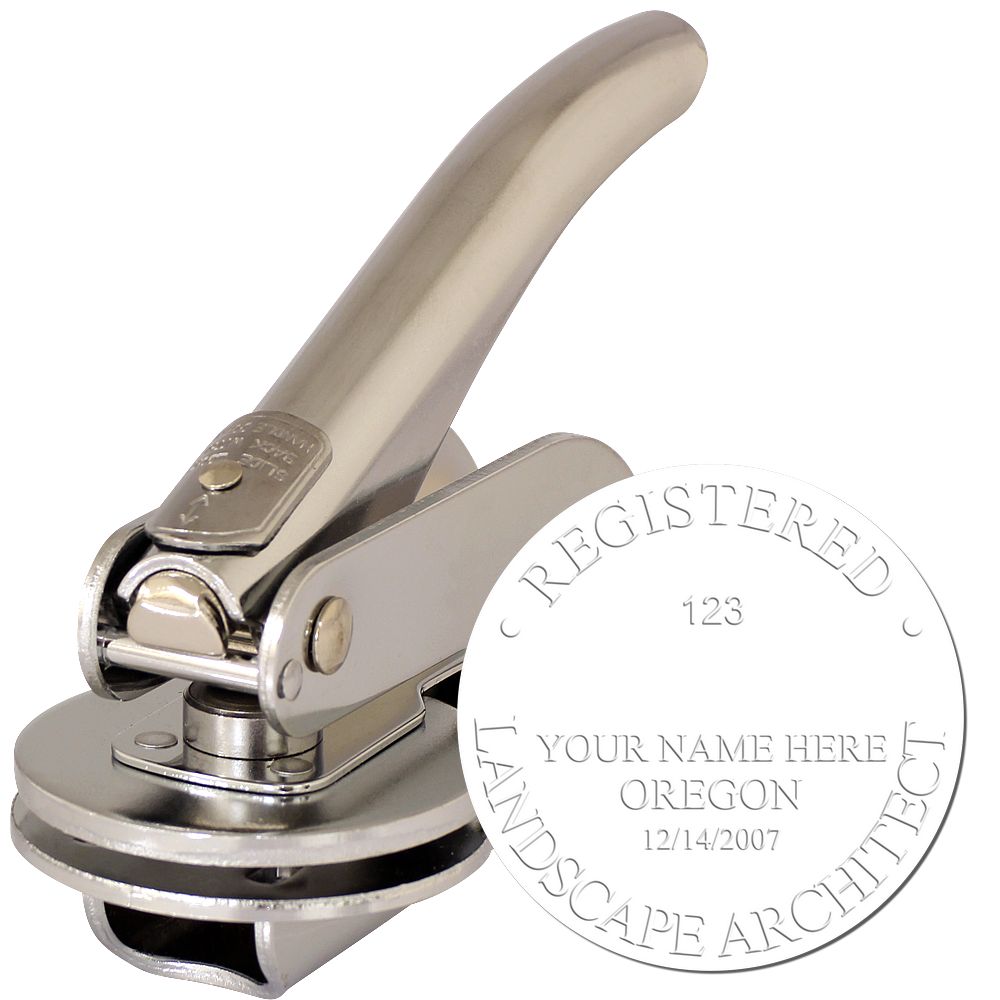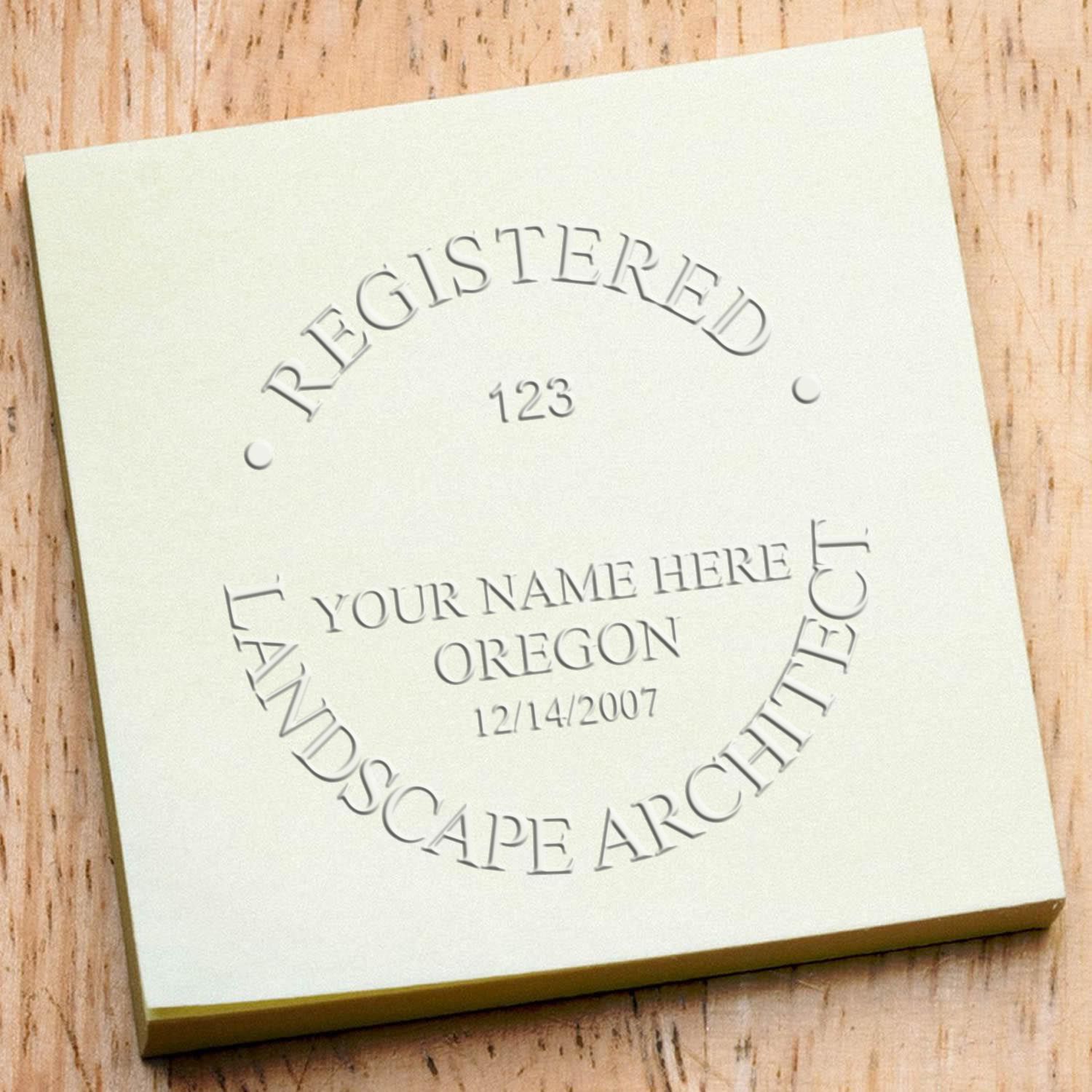The Importance of Architect Stamps
When it comes to the field of architecture, architect stamps play a vital role in ensuring the integrity and accountability of architectural documents. Let's explore what architect stamps are and why they are required in Utah.
What is an Architect Stamp?
An architect stamp, also known as an architect seal, is a mark or impression made by a licensed architect on architectural drawings, plans, specifications, or other professional documents. The stamp typically contains the architect's name, license number, and the phrase "Registered Architect" or an equivalent designation.
The purpose of an architect stamp is to authenticate and certify that the document has been prepared, reviewed, and approved by a licensed architect. It serves as a visible indication that the architect takes professional responsibility for the accuracy, completeness, and compliance of the design and construction documents.
Why Architect Stamps are Required in Utah
In Utah, architect stamps are required as part of the licensing and regulatory process for architects. The state of Utah, like many others, has established specific guidelines and regulations to ensure that architectural services meet the necessary standards of professionalism and safety.
By requiring architect stamps, Utah aims to protect the public by ensuring that architectural documents are prepared and reviewed by qualified individuals. The stamp serves as a symbol of credibility and accountability, providing clients, contractors, and regulatory authorities with assurance that the architectural work meets the necessary standards and has been performed by a licensed professional.
To fully understand the requirements and guidelines for architect stamps in Utah, architects should refer to the Utah Architect Stamp Guidelines provided by the Utah Architectural Licensing Board. These guidelines outline the specific requirements for obtaining and using architect stamps in the state.
By adhering to the Utah architect stamp requirements, architects can demonstrate their professionalism, adhere to legal and regulatory obligations, and ensure the highest standards of quality in the architectural services they provide.
Understanding Utah Architect Stamp Guidelines
To ensure compliance with the regulations and requirements set forth by the state of Utah, architects must have a thorough understanding of the Utah architect stamp guidelines. These guidelines outline the licensing requirements, design specifications, and size and placement specifications for architect stamps.
Utah State Licensing Requirements
Before an architect can obtain an architect stamp in Utah, they must meet the licensing requirements set by the Utah Division of Occupational and Professional Licensing (DOPL). These requirements typically include a combination of education, experience, and passing the Architect Registration Examination (ARE). For detailed information on the specific licensing requirements, architects should refer to the official website of the Utah Architectural Licensing Board.
Guidelines for Architect Stamp Design
The design of an architect stamp is subject to specific guidelines to ensure its authenticity and compliance with state regulations. The stamp design must include the architect's name, license number, and the words "Registered Architect" or "Architect." The design may also include the architect's signature, although this is not a requirement in Utah.
Architects should consult the utah architect stamp regulations for specific details regarding the design elements, size, and placement of the stamp. These guidelines are in place to maintain consistency and prevent fraudulent use of architect stamps.
Size and Placement Specifications
In addition to the design guidelines, architects must adhere to specific size and placement specifications for their architect stamp. The stamp should be clearly visible and legible when affixed to the architectural drawings, designs, or other professional documents. The recommended size of the stamp typically ranges from 1.5 inches to 2 inches in diameter.
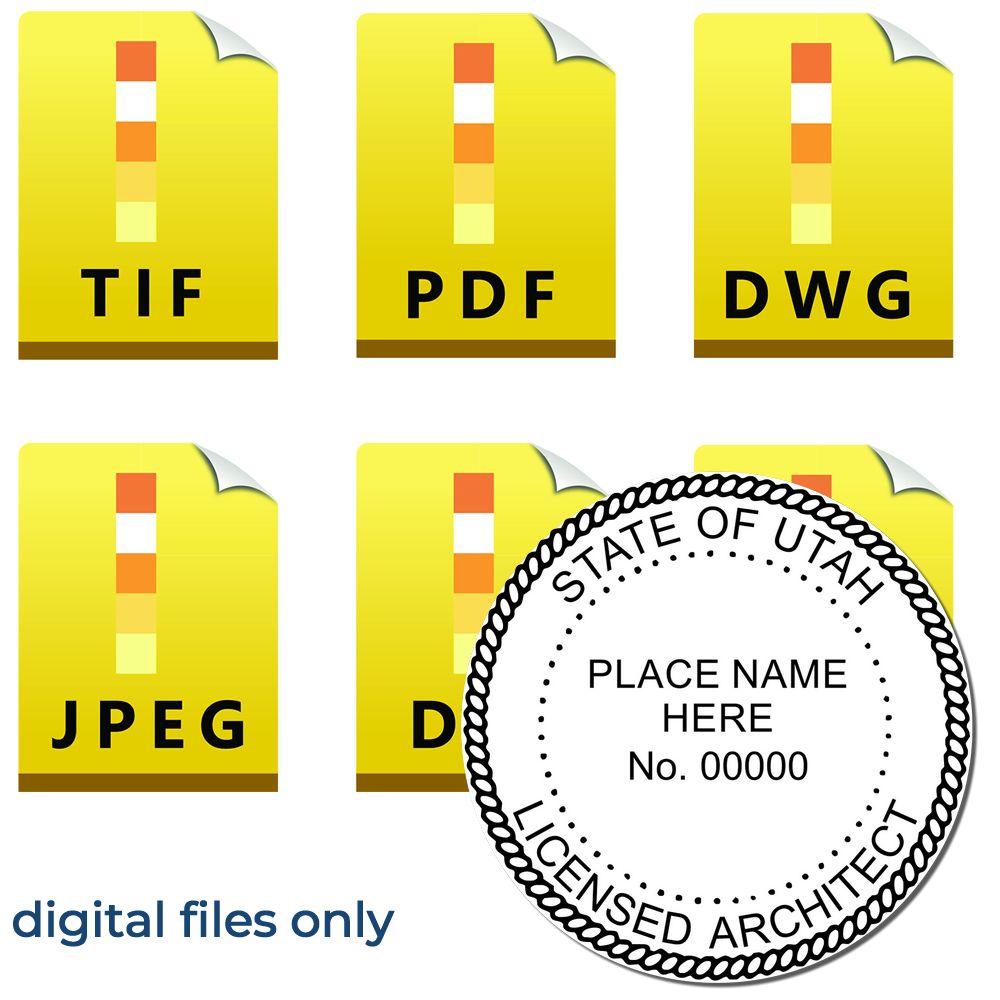
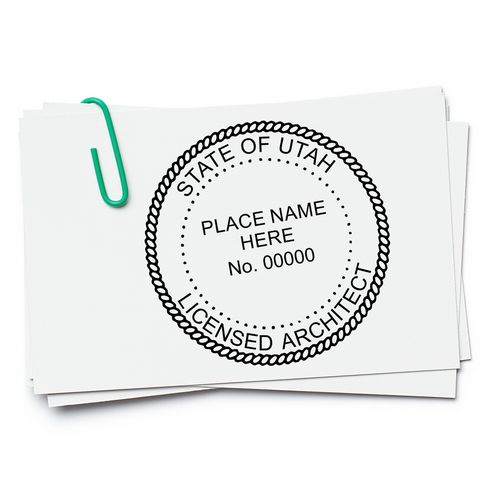
Architects should ensure that the stamp is placed in a prominent location on the document, such as the title block or the lower right-hand corner. The stamp should not obstruct any critical information or drawings on the document.
It is important for architects to stay informed and up-to-date with the latest Utah architect stamp guidelines to avoid any non-compliance issues. By adhering to these guidelines, architects can confidently use their architect stamp while maintaining the integrity of their professional work.
Navigating the Process
Once you understand the importance and guidelines associated with Utah architect stamps, it's time to navigate the process of obtaining one. This section will guide you through where to obtain an architect stamp, how to shop for one, and provide tips for choosing the right architect stamp for your needs.
Where to Obtain an Architect Stamp
When it comes to obtaining an architect stamp in Utah, there are several options available. One common approach is to purchase an architect stamp from an authorized stamp vendor. These vendors specialize in providing stamps that comply with the Utah architect stamp guidelines. You can find a variety of authorized vendors online or in local office supply stores.
Before making a purchase, ensure that the vendor you choose is reputable and offers stamps that meet the specific requirements set forth by the Utah Architectural Licensing Board. This ensures that your architect stamp is valid and recognized by the relevant authorities. For more information on the requirements for architect stamps in Utah, refer to our article on utah architect stamp requirements.
How to Shop for an Architect Stamp
When shopping for an architect stamp, it's important to consider a few key factors. First, ensure that the stamp you select meets the size and placement specifications outlined in the Utah architect stamp guidelines. This ensures that your stamp will be legible and easily identifiable on the documents you stamp.
In addition to size and placement, consider the materials used to create the stamp. Most architect stamps are made with durable materials such as metal or high-quality plastic, ensuring that they withstand repeated use. Opting for a self-inking stamp can also be a convenient choice, as it eliminates the need for a separate ink pad.
Consider the overall design and appearance of the stamp as well. While the guidelines may provide specific requirements, you can still choose a stamp that reflects your personal or professional style. Just ensure that the required information, such as your name, registration number, and the words "Registered Architect," are clearly visible.
Tips for Choosing the Right Architect Stamp
Choosing the right architect stamp is crucial for ensuring compliance with Utah architect stamp regulations. Here are some tips to help you make the best choice:
-
Research and Compare: Take the time to research different stamp vendors and compare their offerings. Look for vendors with positive customer reviews and a reputation for providing high-quality architect stamps.
-
Review the Guidelines: Familiarize yourself with the specific requirements outlined in the Utah architect stamp guidelines. Pay attention to the size, placement, and content specifications to ensure your stamp meets all the necessary criteria.
-
Consider Longevity: Look for a stamp that is made with durable materials and has a long lifespan. This ensures that your architect stamp will remain functional and legible throughout its intended use.
Save 15%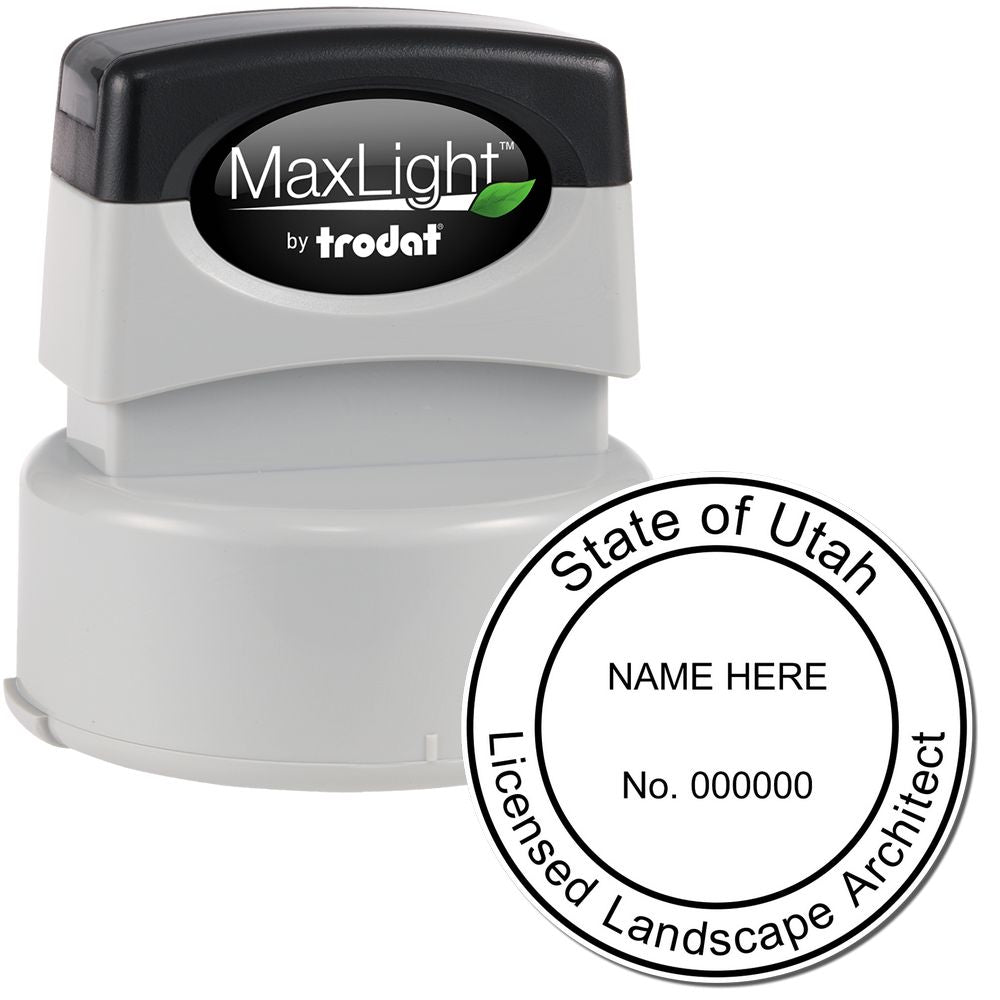
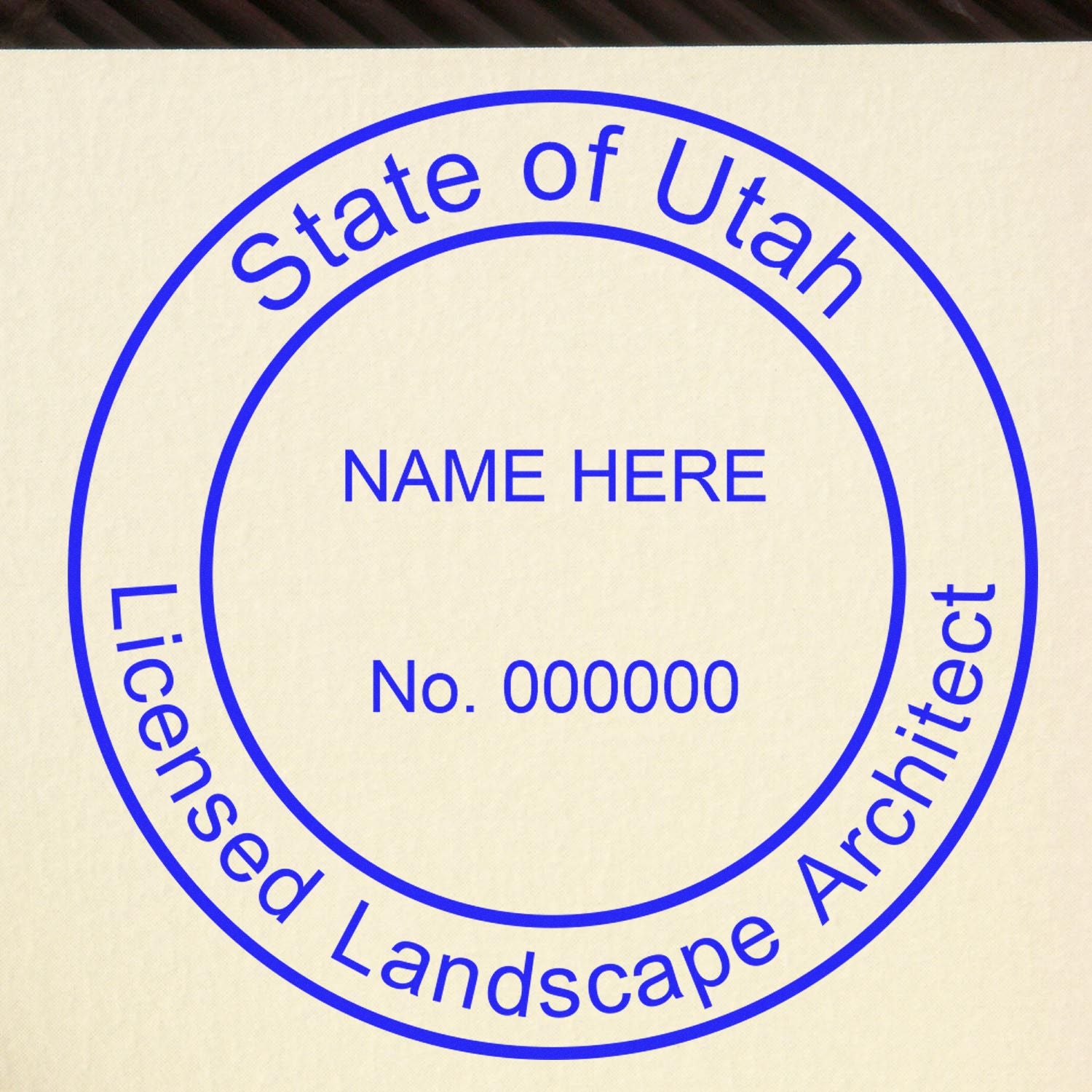 Premium MaxLight Pre-Inked Utah Landscape Architectural Stamp3021LA-UTSale price$46.95 Regular price$54.95
Premium MaxLight Pre-Inked Utah Landscape Architectural Stamp3021LA-UTSale price$46.95 Regular price$54.95 -
Seek Professional Advice: If you're uncertain about which architect stamp to choose, consider consulting with other architects or professional organizations. They may be able to provide recommendations or insights based on their own experiences.
By following these tips and being mindful of the Utah architect stamp guidelines, you can select an architect stamp that meets all the necessary requirements while aligning with your preferences. Remember, obtaining and using a valid architect stamp is an essential aspect of maintaining compliance with Utah regulations and showcasing your professional credentials.
Maintaining Compliance
Once an architect in Utah has obtained their architect stamp, it is important to understand the requirements for renewal and expiration, staying informed about Utah architect stamp guidelines, and the consequences of non-compliance with these guidelines.
Renewal and Expiration of Architect Stamps
Architect stamps in Utah have an expiration date and must be renewed to maintain their validity. The specific renewal period may vary, so architects should be aware of the expiration date and initiate the renewal process in a timely manner. Failure to renew the architect stamp before its expiration can result in the architect being unable to legally sign and seal architectural documents.
Architects can refer to the Utah Architectural Licensing Board for detailed information on the renewal process and any associated fees. It is essential to stay proactive and keep track of the renewal deadlines to ensure uninterrupted compliance with the Utah architect stamp guidelines.
Staying Informed about Utah Architect Stamp Guidelines
Utah architect stamp guidelines may undergo updates and revisions over time. Architects must stay informed and up to date with any changes to ensure compliance. This includes being aware of any amendments or modifications to the stamp design requirements, size specifications, and placement guidelines.
By regularly visiting the Utah Architectural Licensing Board website or subscribing to their updates, architects can stay informed about any changes or announcements related to the Utah architect stamp guidelines. Additionally, professional associations and networks specific to architects in Utah may also provide valuable resources and updates regarding the guidelines.
Consequences of Non-Compliance
Non-compliance with the Utah architect stamp guidelines can have serious consequences. Architects who fail to adhere to the guidelines may face disciplinary actions, fines, or even the suspension or revocation of their architectural license. It is crucial to understand and follow the guidelines to maintain compliance and professional integrity.
Architects should familiarize themselves with the specific consequences outlined by the Utah Architectural Licensing Board to fully understand the potential risks associated with non-compliance. By staying informed, architects can ensure that their architect stamp remains valid and in compliance with the established guidelines, allowing them to continue their architectural practice without any legal or professional setbacks.
Maintaining compliance with the Utah architect stamp guidelines is essential for architects who want to practice their profession in accordance with the state's regulations. By staying informed, renewing architect stamps on time, and following the guidelines diligently, architects can confidently unleash their architectural vision while meeting the necessary legal and professional requirements.
Resources for Utah Architects
As a Utah architect, it's essential to have access to the right resources to navigate the requirements and guidelines for obtaining and using an architect stamp. Here are some valuable resources that can assist you in your architectural journey:
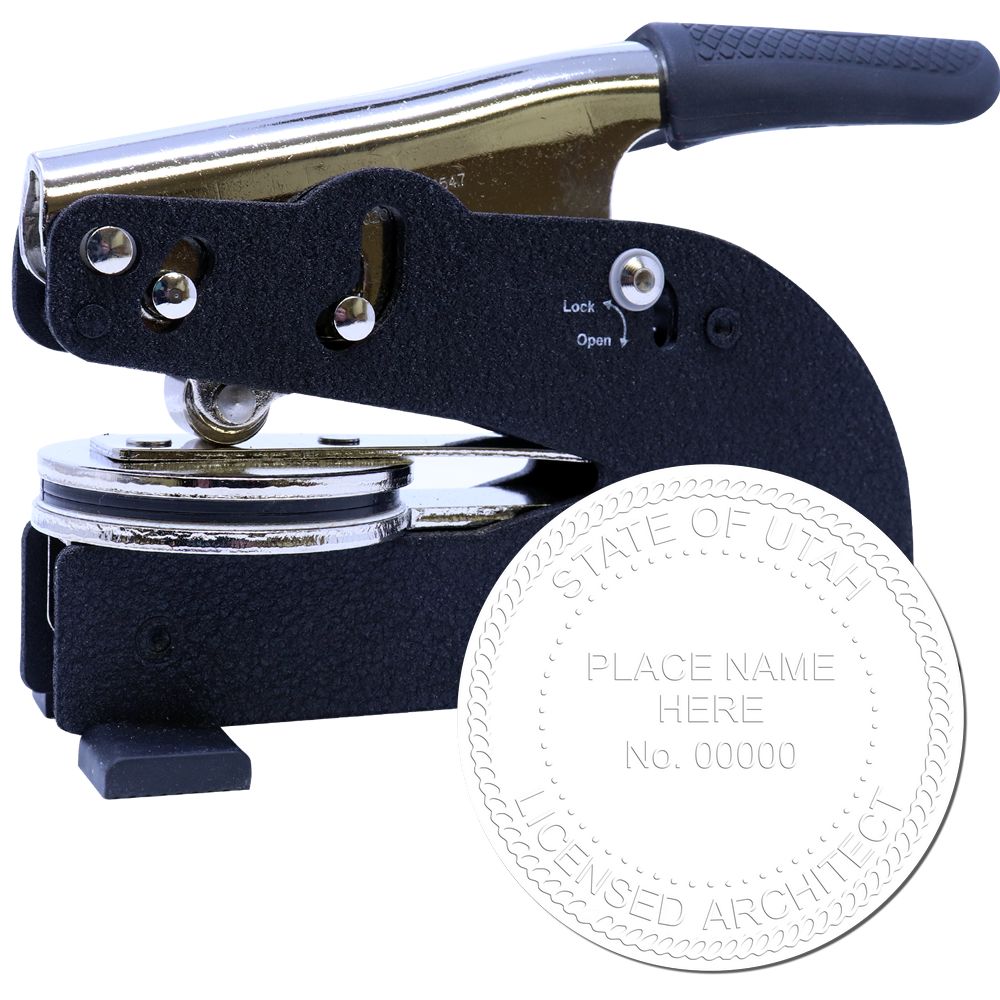
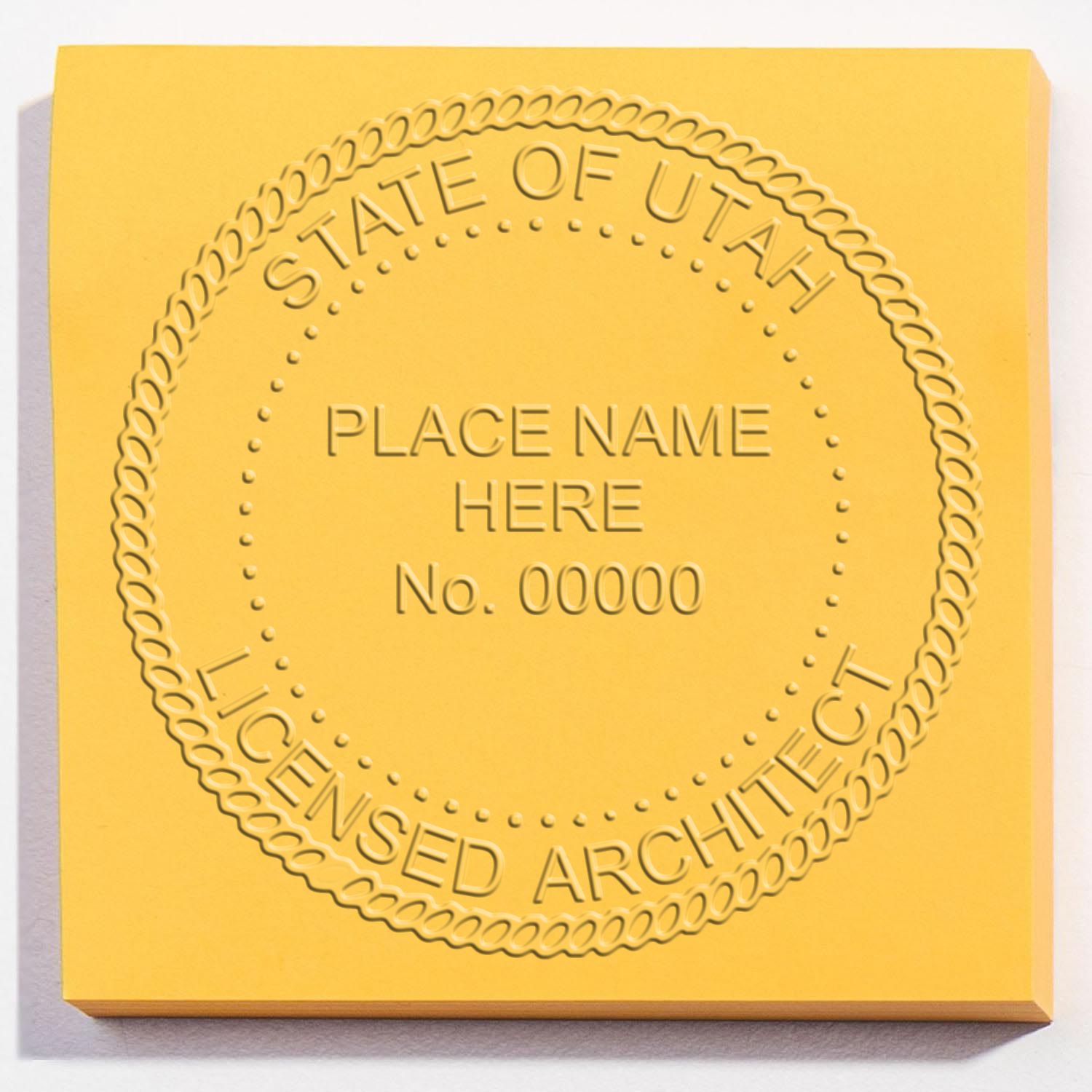
Utah Architectural Licensing Board
The Utah Architectural Licensing Board is the regulatory authority responsible for overseeing the licensure and regulation of architects in Utah. They provide comprehensive information on the requirements and procedures for obtaining an architect stamp in the state. By visiting their website, you can access the most up-to-date information on licensing, renewal, and other regulatory matters. For more details, visit the Utah Architectural Licensing Board.
Professional Associations and Networks
Joining professional associations and networks can be highly beneficial for Utah architects. These organizations provide opportunities for networking, professional development, and access to valuable resources. Some prominent associations for architects in Utah include the American Institute of Architects (AIA) Utah Chapter and the Utah Society of Architects (USA). These associations offer various programs, events, and resources to support architects in their career growth and ensure compliance with industry standards.
Additional Support and Guidance
In addition to the licensing board and professional associations, there are other sources of support and guidance available for Utah architects. Online forums and discussion boards dedicated to architecture can provide a platform for architects to connect, seek advice, and share experiences. Additionally, there are online resources and publications that offer valuable insights into architectural trends, best practices, and the latest advancements in the field.
Remember, staying informed about Utah architect stamp guidelines is crucial to ensure compliance with state regulations. By utilizing these resources, you can stay updated on any changes or updates to the guidelines and access the support you need as a Utah architect.
Whether you are looking for specific information on Utah architect stamp requirements, regulations, or simply seeking guidance on architectural matters, these resources will prove instrumental in your professional journey. Stay connected, stay informed, and continue to develop your architectural skills with the help of these valuable resources.
About ESS
At ESS, we take great pride in being one of the leading providers of custom rubber stamps, professional seals, and notary stamps in the industry. With decades of experience in the field, we have established ourselves as a reliable and reputable source for all your stamp and seal needs.
Our team of experts is dedicated to providing top-notch customer service, ensuring that you receive personalized assistance in selecting the perfect stamp or seal for your needs. We understand that each customer has unique needs and preferences, which is why we offer a wide range of options and styles for you to choose from. At ESS, quality is our top priority. That's why we offer a state board guarantee on all of our products, giving you peace of mind knowing that your stamp or seal is built to last. We only use the highest quality materials to ensure that your stamp or seal looks professional and is durable enough to withstand regular use.
We also understand that time is of the essence, which is why we offer a quick turnaround on all of our products. Our streamlined process, coupled with our commitment to efficiency, ensures that you receive your stamp or seal in a timely manner without sacrificing quality. In short, ESS is your one-stop-shop for all your stamp and seal needs. With a focus on quality, customer service, and efficiency, we are confident that we can provide you with the perfect stamp or seal to meet your needs.

